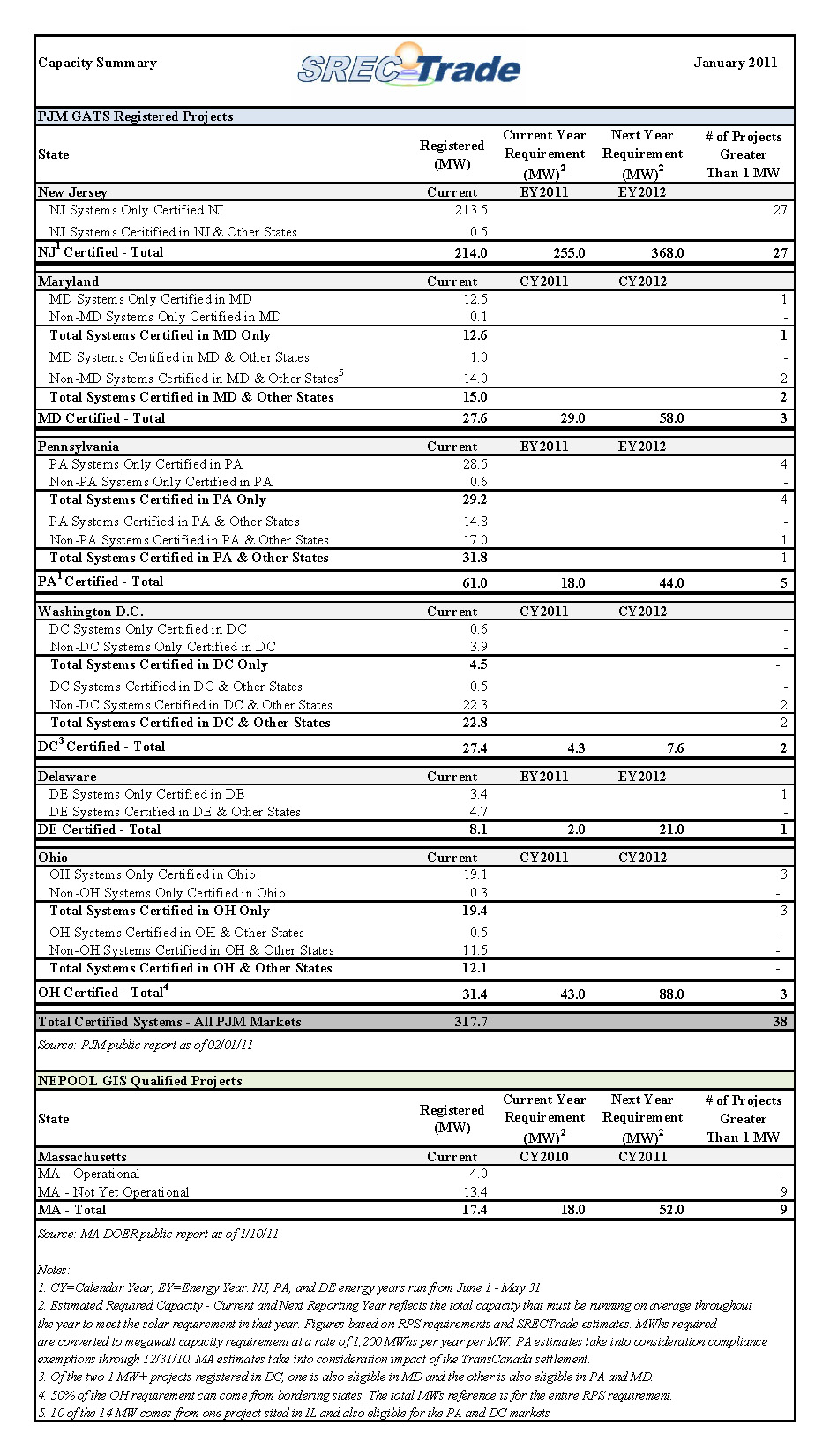Governor Christie’s administration has released the 2011 Energy Master Plan, which can be viewed in its entirety here. The Plan is generally positive for the stability of NJ SREC markets, and signals overall support by the Governor’s Office for solar in NJ. The plan specifically lists support for the following:
1. Accelerate the RPS:
A temporary acceleration of the RPS would provide some interim relief for the current market in SRECs and an opportunity for the industry to adjust. This acceleration would require increasing the RPS over the next three years and reducing the outlier years of the RPS schedule to minimize the impact to ratepayers.”
and
2. Give preference to smaller, distributed projects:
Projects that offer a “dual benefit” should take priority for approval and any legislative expansion of SREC eligibility by modifying the definition of “distribution system” should also provide the BPU with the ability to review and approve subsidies for grid-supply projects to ensure compatibility with land use, environmental and energy policies. Additionally, the development of solar projects should not impact the preservation of open space and farmland.
We read that second bullet as support for giving the BPU the ability to manage large utility scale projects so that they don’t flood the SREC market.
Other interesting points include support for extending Electric Distribution Company contracting programs and support for a requirement to set up a supply queue that will give the market insight into pipeline of future non-residential systems.
The Governor also calls for reducing the Solar Alternative Compliance Payment (SACP) schedule to minimize impact of the previous changes to ratepayers. This seems to be a reasonable concession on the part of SREC sellers, especially given that the current oversupply situation makes the SACP irrelevant.
The EMP by itself does not make policy or change the current NJ renewable portfolio standard. However, it does signal the Governor’s position on any legislation that he may be asked to sign that would change the portfolio standard law, like Assembly Bill 4226 which contains many of the items listed in the EMP.
The EMP process itself has been illuminating, revealing a Governor’s office that is responsive to stakeholder input and seems to be responsive to data over dogma. The draft EMP released earlier in the year was far less positive toward solar, however over several public meetings and hundreds of public comments the Governor’s office heard a great deal about the impact of solar on jobs and NJ’s energy supply. The final Plan reflects much of this input and is a very different document from the draft.
Overall, the 2011 EMP indicates that the Governor supports solar, but he isn’t willing to write the industry a blank check. The solar industry will need to continue to prove it’s value to New Jersey, and as long as it continues to do so it appears to have the support of Governor Christie.

